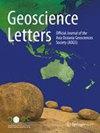Potential for tsunami detection via CCTV cameras in northeastern Toyama Prefecture, Japan, following the 2024 Noto Peninsula earthquake
IF 4.3
3区 地球科学
Q1 GEOSCIENCES, MULTIDISCIPLINARY
引用次数: 0
Abstract
This study explored closed-circuit television (CCTV) networks in northeastern Toyama Prefecture, Japan, as a new data source for tsunami detection following the 2024 Noto Peninsula earthquake. We analyzed CCTV footage and extracted time-series water level fluctuations at Yokoyama, Shimoiino, and Ekko. Spectral analysis of these waveforms revealed several long-period peaks (more than 100 s) in power spectral density (PSD), suggesting the presence of tsunami components. Notably, relatively large PSD peaks at approximately 5–10 min were observed at all CCTV locations in this study and at offshore wave observation points (Tanaka and Toyama). At Yokoyama, a maximum run-up of approximately 3 m was confirmed around 16:28. Although water level fluctuations at Shimoiino and Ekko were detected, identifying tsunami components proved challenging due to their small magnitude compared to other wave components. Despite these challenges, this study demonstrates the potential of CCTV networks for tsunami detection, and further research is needed to achieve real-time detection.2024 年能登半岛地震后,通过日本富山县东北部的闭路电视摄像机探测海啸的潜力
本研究探索了日本富山县东北部的闭路电视(CCTV)网络,将其作为 2024 年能登半岛地震后海啸探测的新数据源。我们分析了闭路电视录像,并提取了横山、下井野和江口的水位波动时间序列。对这些波形的频谱分析表明,功率谱密度 (PSD) 中存在几个长周期峰值(超过 100 秒),表明存在海啸成分。值得注意的是,在本次研究的所有 CCTV 观测点和近海波浪观测点(田中和富山)都观测到了约 5-10 分钟的相对较大的 PSD 峰值。在横山,16:28 左右确认了约 3 米的最大上升。虽然在下井野和 Ekko 检测到了水位波动,但由于与其他波浪成分相比,海啸成分的幅度较小,因此确定海啸成分具有挑战性。尽管存在这些挑战,这项研究还是证明了 CCTV 网络在海啸探测方面的潜力,要实现实时探测,还需要进一步的研究。
本文章由计算机程序翻译,如有差异,请以英文原文为准。
求助全文
约1分钟内获得全文
求助全文
来源期刊

Geoscience Letters
Earth and Planetary Sciences-General Earth and Planetary Sciences
CiteScore
4.90
自引率
2.50%
发文量
42
审稿时长
25 weeks
期刊介绍:
Geoscience Letters is the official journal of the Asia Oceania Geosciences Society, and a fully open access journal published under the SpringerOpen brand. The journal publishes original, innovative and timely research letter articles and concise reviews on studies of the Earth and its environment, the planetary and space sciences. Contributions reflect the eight scientific sections of the AOGS: Atmospheric Sciences, Biogeosciences, Hydrological Sciences, Interdisciplinary Geosciences, Ocean Sciences, Planetary Sciences, Solar and Terrestrial Sciences, and Solid Earth Sciences. Geoscience Letters focuses on cutting-edge fundamental and applied research in the broad field of the geosciences, including the applications of geoscience research to societal problems. This journal is Open Access, providing rapid electronic publication of high-quality, peer-reviewed scientific contributions.
 求助内容:
求助内容: 应助结果提醒方式:
应助结果提醒方式:


